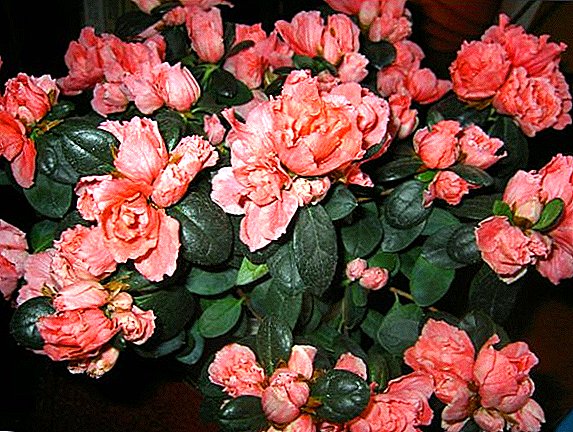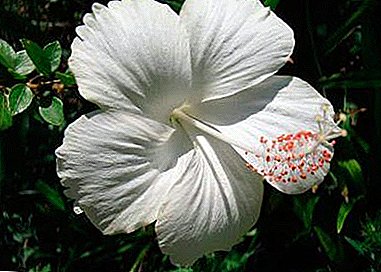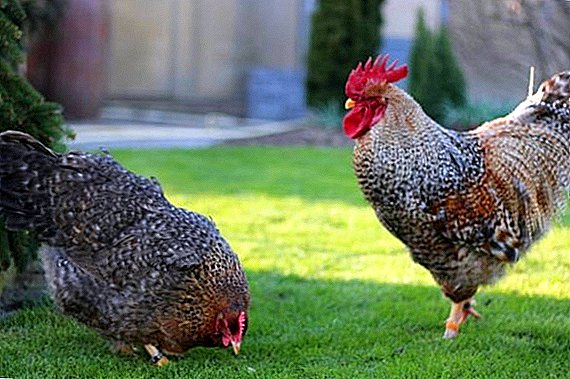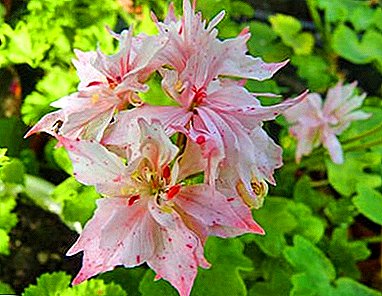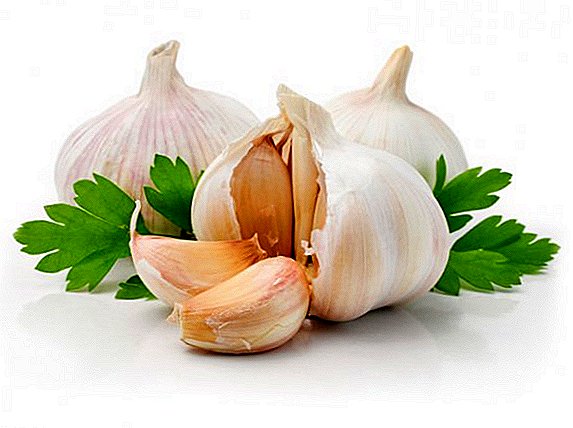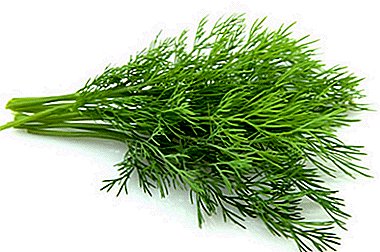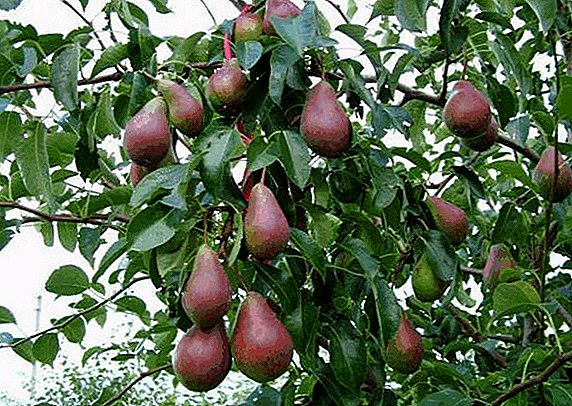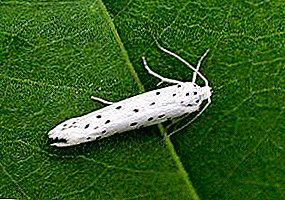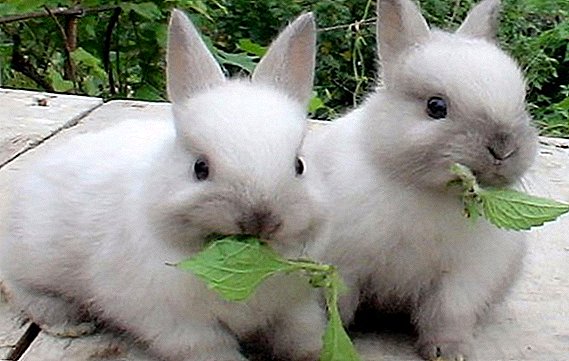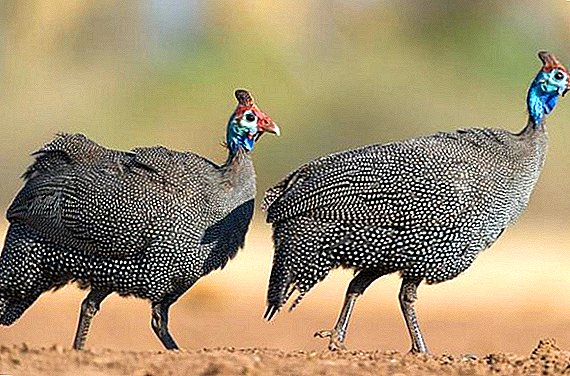 Guinea fowls are not so often found on domestic farms as chickens, ducks or geese, but every year interest in these exotic birds only increases. Contrary to popular belief, they are not so sissy, although you should not forget about some of the requirements for the diet. It is about this aspect of their content that will be discussed further.
Guinea fowls are not so often found on domestic farms as chickens, ducks or geese, but every year interest in these exotic birds only increases. Contrary to popular belief, they are not so sissy, although you should not forget about some of the requirements for the diet. It is about this aspect of their content that will be discussed further.
What to feed guinea fowl in the summer
Feeding guinea fowl depends not only on the age of the bird, but also on the season and even the weather outside the window, because at any moment birds should receive the most nutritious and healthy food, compensating for the body's energy and vitamin losses.
Important! Regardless of the season of the year, feeding of guinea fowls should be three times a day and as balanced as possible.
In the year one bird eats about 32 kg of feed mixture, 2 kg of mineral feed, 12 kg of fresh greens, 4 kg of food of animal origin and the same number of root crops. With free range in summer, the amount of grain food can be reduced by 1/3 of the usual amount.  Of course, spoiled feed and moldy grain should not be given to birds.
Of course, spoiled feed and moldy grain should not be given to birds.
Fresh greens
When free-range you can not worry about enough green grass in the diet of guinea fowls, because they are able to find everything you need. However, with cellular maintenance, the poultry farmer will have to independently collect greens, which means it will be helpful to know about some of its consumption rates.
So, for 1 adult bird per day there are about 40-60 g of chopped herbal mixture, the main components of which can be:
- nettle - 20 g;
- quinoa - 10-15 g;
- ambrosia - 10 g;
- tops - 10 g;
- cabbage leaves - about 10 g;
- dandelion leaves - 10 g;
- legumes - 10 g.
 Of course, these are only approximate figures, which you can adjust depending on the vegetation characteristic of your area (unlike chickens, guinea fowls eat almost any greens).
Of course, these are only approximate figures, which you can adjust depending on the vegetation characteristic of your area (unlike chickens, guinea fowls eat almost any greens).At the same time, we should not forget that the grass cannot serve as the only food of guinea fowls, and grain mixtures must still be present in their diet.
Did you know? Guinea fowl - human assistants. They are not only taught to collect Colorado beetles in the garden, but they can also be used as watchmen: these birds quickly become accustomed to "their" people and make a terrible noise if someone else enters the yard.
Grain and Grain Mixes
As we mentioned earlier, in the period of feeding birds with greens the amount of grain feed consumed by them can be reduced.
As a result, an approximate diet per individual per day will look like this:
- crushed wheat - 5-10 g;
- crushed corn - 10 g;
- chopped barley - 5-10 g;
- millet (up to 40-59 days of age) - 4 g.

Roots
The summer diet of guinea fowls does not do without root vegetables, which, before serving, can either be grated raw, or boiled and mashed. For poultry feeding, it is preferable to use potatoes and carrots, since the remaining guinea fowl roots are eaten with less hunting. A day for one guinea fowl may account for 20-30 g of such food. 
Food waste
Leftover food from the human table is a great alternative to grain feeds and a good way to diversify the bird menu.
Both in winter and in summer, guinea fowls will not refuse:
- boiled vegetables (they eat well the remains of soups and other liquid dishes, the main thing is that they are not strongly seasoned with spices);
- cereal (buckwheat, rice);
- remnants of fish and meat dishes;
- dairy products.
Any of these types of food waste will be an excellent addition to wet mash, replacing up to half of the grain. 1 bird can have about 30-40 grams of such food per day, although it is difficult to make accurate calculations: some guinea fowls eat more, others prefer mostly “green” food.
Familiarize yourself with the list of guinea fowl breeds - wild and domestic, how to breed guinea fowls at home, and also learn about the peculiarities of the content of guinea fowl and guinea fowl of the Zagorskaya white-breast.
Mineral Supplements
For the well-being of the bird and its full development in the usual diet is useful to include mineral supplements that help strengthen the bone tissue. 
The approximate composition of the desired mineral mixture in this case is as follows:
- salt - 0.3-0.6 g;
- fodder yeast - 3-4 g;
- bone meal - 10-12 g;
- meat and bone meal - 10 g;
- crushed chalk - 5 g;
- wood ash - 10-15 g;
- fish oil - 3 g;
- large river sand - 5-10 g;
- crushed shells - 5 g;
- fine gravel - 3-6 g.
This amount of nutrients will be quite enough for one adult bird per day, and she will not necessarily eat the mixture in full. You can either mix all the mineral ingredients together, or scatter them into separate containers, but only so that all guinea fowls have access to the dishes at any time.
Important! River shells must be crushed very well, because large and sharp pieces can damage the poultry's esophagus, as a result of which it will die.
What to give fowl in the winter
In the cold season, vitamins and beneficial trace elements become much smaller, so the diet of guinea fowl may change. We have to compensate for the lack of grass and animal protein in other products. 
Instead of grass
Many types of grass are not available in the winter, but you can still prepare something.
To feed guinea fowl in the cold season can be such products:
- finely chopped cabbage - 10-15 g per bird per day;
- grated carrot - 20 g;
- crushed beetroot - 10-15 g;
- germinated grain - 20-30 g;
- chopped conifer needles, which in winter are very rich in vitamin C (they give no more than 10-15 g).
In the springtime, it is better not to feed guinea fowls with needles, as it increases the concentration of essential oils that can harm the bird.
It will be useful for you to learn how to breed guinea fowl in a home incubator, how to care for guinea fowl chickens, and how to properly contain guinea fowls in winter.
Instead of natural protein
In winter, guinea fowls do not have the opportunity to find snails, locust or at least Colorado beetles in the garden, so they have to feed them a reasonable alternative to animal protein. 
These products include:
- meat and bone meal or fish meal - 15-20 g per day for 1 guinea fowl;
- chopped meat waste - 10-15 g;
- fish glands - 10 g;
- cottage cheese - 10-15 g.
Important! If you are going to slaughter a bird soon, then fish by-products should be abandoned, because the meat gets an extremely unpleasant smell.
As a preventive measure, in order to prevent diseases of the digestive tract, gesar salted freshly prepared weak solution of potassium permanganate, replacing it with a standard drink 1 time in several days. During the breeding season, it is useful to supplement the birds ’diet with wet feed mixed with yeast in the amount of 0.5 g per 1 individual. 
Grains and feed
No less important for guinea fowls of plant-derived protein. The grain contains very little (most of the composition is carbohydrates), so in the winter it is desirable to supplement the diet with soy, peas, beans and lentils, and the latter are even more preferred, especially if the poultry farmer is worried about the presence of GMOs in cheap soybeans.
All grain and legumes are fed to the bird only after pre-crushing, because only in this way can solid food be digested well by the bird's body. After mixing all of the above in equal proportions to one average guinea fowl (about 3 kg) should be 150-200 g of feed.
If we divide this number into the types of feed consumed by the bird, then it turns out that one individual eats about 30–50 g of legumes (peas, soybeans, or beans), in addition to which, of course, there is grain. 
Mineral supplements and vitamins
Addition to the above described winter ration of guinea fowls can serve as mineral and vitamin supplements, which not only strengthen the bird's skeleton, but also have a good effect on its overall health.
For this purpose, individual troughs are usually filled in:
- crushed sea or river shells;
- crushed chalk;
- wood ash;
- coarse pure sand (or gravel of small fraction).
There is no specific norm of consumption of these minerals, it is enough just to add them to the feeders, and the birds will take as much as they need. In addition, it is desirable to pour sand and wood ash into large containers so that guinea fowls, if desired, could climb and clean the feathers.
Find out how useful and how calorie guinea fowl meat.
Mineral supplements increase the hardness of eggs, normalize the level of calcium in the avian organism and contribute to the better grinding of food in the stomach. 
Factory feed
Factory poultry feed and supplements to the basic diet can be a good solution for balanced nutrition of guinea fowls in the case when the poultry farmer does not have time to do independent selection of different products.
Most often they are given in a dry form, but the main thing is to choose a high-quality mixture with all the necessary certificates. Consider several popular options for such products.
Did you know? If you have to catch a guinea fowl, never grab her flywheel or tail feathers, as in case of danger she easily drops them. The easiest way to cover the bird net, thereby saving from injury.
"Ryabushka"
Under this name, several options of feed are produced: full ration and premix, which provides for the mixing of the additive with the main food.  The full ration "Ryabushka" is designed for feeding chickens after 120 days of age and during the entire period of egg production, but in practice this option is also used in breeding guinea fowls.
The full ration "Ryabushka" is designed for feeding chickens after 120 days of age and during the entire period of egg production, but in practice this option is also used in breeding guinea fowls.
According to the producers, these small granules have a very positive effect on the body of the bird, which is expressed in:
- increased egg production;
- receiving larger hard-shelled eggs;
- improving the reproductive abilities of poultry and the incubation qualities of eggs;
- strengthening the body's defenses and improving the appearance of the plumage;
- improving the digestibility and digestibility of nutrients from the diet.
In addition, there are high taste qualities of guinea fowl meat that consume Ryabushka food.  Such high results can be achieved due to the balanced composition of the product, which includes protein of plant origin (sodium chloride, lysine, methionine and cystine), calcium, phosphorus, copper, iron, manganese, zinc, selenium, iodine, cobalt and many essential vitamins for birds: A, D3, E, K3, H groups B (B1-B6, B12).
Such high results can be achieved due to the balanced composition of the product, which includes protein of plant origin (sodium chloride, lysine, methionine and cystine), calcium, phosphorus, copper, iron, manganese, zinc, selenium, iodine, cobalt and many essential vitamins for birds: A, D3, E, K3, H groups B (B1-B6, B12).
The use of feed should start with 80 g per day, feeding this amount twice.
Premix "Ryabushka" is a dry mix with the most complete set of useful components that are simply added to the basic diet of poultry. Completely replacing the usual food in this case will not work, but adding it with useful components is quite realistic.
In fact, the powder contains all the same components as in the full-fat option, except that in addition to them there is a feed antibiotic and a flour-and-cereals filler.
There are no hormones, preservatives or GMOs here, so the additive can be safely used for any poultry, observing the dosage on the package. For guinea fowls this is 1.2-1.5 g of mixture per 1 bird per day.
"Felutsen"
For guinea fowls, chickens and other poultry, Golden Felutsen P2 is often used, another feed additive that blends well with the main feed.  It is presented in the form of a powder, which is mixed in the grain mixtures or wet mash, following the dosage specified by the manufacturer: guinea hens are fed 55-60 g per 1 kg of food, and the breeding individuals the amount of the additive is increased to 70 g per 1 kg of feed.
It is presented in the form of a powder, which is mixed in the grain mixtures or wet mash, following the dosage specified by the manufacturer: guinea hens are fed 55-60 g per 1 kg of food, and the breeding individuals the amount of the additive is increased to 70 g per 1 kg of feed.
The composition of "Felucene" includes carbohydrates, vitamins A, groups B, D, K, C, H, as well as minerals represented by calcium, phosphorus, zinc, selenium, cobalt, iodine, manganese, sodium chloride. No additional powder treatments are required before use.
Important! Using the supplement, you should exclude from the diet of guinea fowls chalk, salt components or alternative variants of the same products.
Among the advantages of the use of "Feluzen" are:
- improving the incubation qualities of eggs;
- normalization of digestive processes;
- enhancing the protective functions of the avian organism;
- increasing the strength of eggshell and poultry bone system;
- reducing the likelihood of developing anemia and various deformities of young birds.
Like other supplements, this complex should be introduced into the diet gradually, starting with 1/7 of the daily dose and bringing it to the recommended values during the week.
"Mixwith"
Like the previous versions, the specified feed additive is supplied in the form of a powder, including calcium, iron, copper, zinc, manganese, selenium, iodine, vitamins A, D3, E, group B (B1-B6, B12), K, H as well as macro- and microelements: manganese, zinc, copper, iodine, cobalt, calcium, iron. 
Its effect on the bird's organism resembles in many respects the action of similar compounds:
- strengthens the bone system;
- increases the strength of the eggshell and the nutritional value of the eggs themselves;
- reduces the consumption of the main feed used (in this case by 10-12%).
To obtain the most effective results, "Mixvit" should be added to the main grain feed of guinea fowls per 1.2 g per bird per day.
Balanced nutrition is the first condition for growing any poultry, because along with food all the necessary vitamins, macro- and microelements get into their bodies. Guinea fowl in this regard is not much more demanding than the same chickens, but this does not mean that they can be fed with anything.
Only compliance with the requirements for the summer and winter diet together with the dosed use of vitamin supplements will be able to ensure good health of the birds and increase their productivity, which should not be forgotten.


